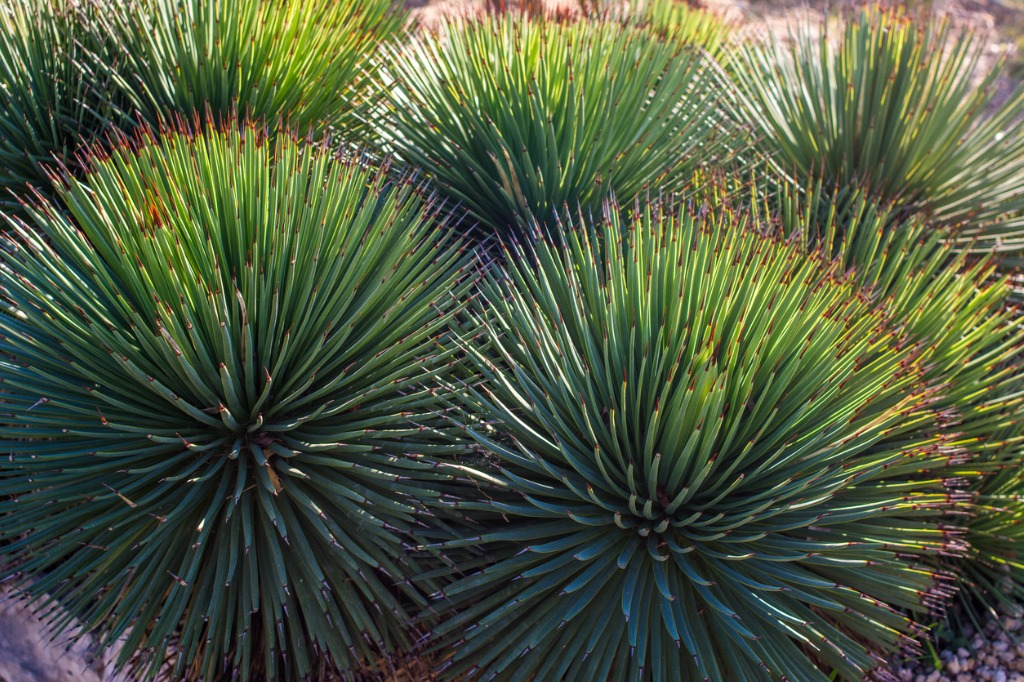Hedgehog Agave
(Agave stricta)

Description
Agave stricta (Synonyms: Agave echinoides) the hedgehog agave, is a species of flowering plant in the family Asparagaceae, native to Puebla and Oaxaca in Southern Mexico. Growing to 50 cm (20 in) tall, it is an evergreen succulent with rosettes of narrow spiny leaves producing erect racemes, 2 m (7 ft) long, of reddish purple flowers in summer. The foliage may develop a red tinge in the summer. The plant is also known to produce pincushion-like offsets as it grows. The Latin specific epithet stricta means erect, or upright. With a minimum temperature of 10 °C (50 °F), this plant requires heated indoor culture during winter in temperate regions, though it may be placed outside during the summer months. It has gained the Royal Horticultural Society's Award of Garden Merit. As with most succulents, it prefers full sun and well drained soils, and may develop root rot if overwatered. Agave is a genus of monocots native to the hot and arid regions of the Americas, although some Agave species are also native to tropical areas of South America. The genus Agave (from the Ancient Greek αγαυή, agauê) is primarily known for its succulent and xerophytic species that typically form large rosettes of strong, fleshy leaves. Agave now includes species formerly placed in a number of other genera, such as Manfreda, ×Mangave, Polianthes and Prochnyanthes. Many plants in this genus may be considered perennial, because they require several to many years to mature and flower. However, most Agave species are more accurately described as monocarpic rosettes or multiannuals, since each individual rosette flowers only once and then dies; a small number of Agave species are polycarpic. Maguey flowers are considered edible in many indigenous culinary traditions of Mesoamerica. Along with plants from the closely related genera Yucca, Hesperoyucca, and Hesperaloe, various Agave species are popular ornamental plants in hot, dry climates, as they require very little supplemental water to survive. Most Agave species grow very slowly. Some Agave species are known by the common name "century plant". The succulent leaves of most Agave species have sharp marginal teeth, an extremely sharp terminal spine, and are very fibrous inside. The stout stem is usually extremely short, which may make the plant appear as though it is stemless.
Taxonomic tree:







